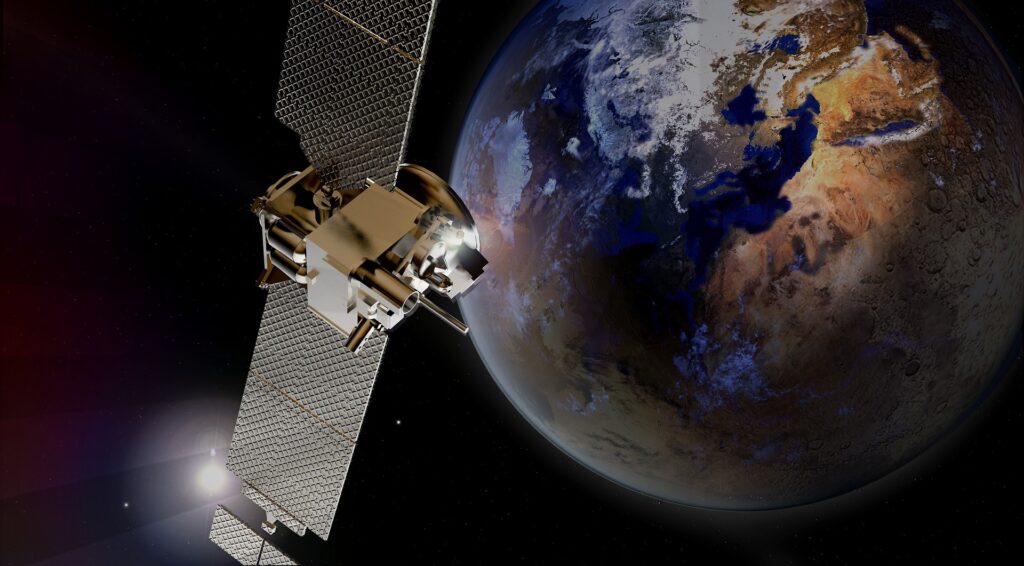Satellites are more than just tools for space exploration; they play a crucial role in monitoring and assessing public health risks. With the help of Earth observation, satellites provide invaluable data that empowers scientists, policymakers, and the general public to take proactive steps in combating environmental health threats. By offering real-time information, these space-based systems are vital for detecting and predicting health hazards caused by environmental factors. The European Union’s Copernicus programme is one of the leading initiatives using satellite technology to study the relationship between environmental conditions and human health.
The Copernicus Health Hub, managed by the European Centre for Medium-Range Weather Forecasts (ECMWF), is a key part of this effort. It aims to analyze how environmental changes impact public health, from heatwaves to air quality and beyond. Through satellites, scientists can track various environmental factors, giving them the tools they need to forecast potential health threats before they happen. Below are five key ways satellite technology is making a difference in safeguarding public health.
1. Monitoring UV Radiation Levels
Exposure to ultraviolet (UV) radiation can lead to severe health risks, including skin cancer, eye damage, and premature aging. The World Health Organization (WHO) has developed the UV Index to measure sun intensity and assess the risk of harm based on various factors like location and weather. Satellites, especially through the Copernicus Atmosphere Monitoring Service (CAMS), track and forecast UV radiation by analyzing data on stratospheric ozone, cloud cover, and aerosol particles in the atmosphere. With this satellite data, individuals can check UV radiation levels up to five days in advance. Many weather apps incorporate this information, allowing users to take protective actions such as wearing sunscreen or avoiding direct sun exposure, depending on the forecast.
2. Air Quality Monitoring and Warnings
Air pollution remains one of the most pressing health challenges worldwide. The World Health Organization (WHO) estimates that air pollution causes approximately seven million deaths annually, with 500,000 of those occurring in Europe. The effects of air pollution are far-reaching, contributing to respiratory diseases, heart conditions, and even complications during pregnancy. To combat this, satellite technology is used to monitor air quality and predict pollution levels. Scientists analyze satellite data along with weather models to forecast air pollution, helping authorities issue timely warnings. Apps like BreezoMeter and Windy use this data to provide real-time air quality updates, helping people reduce their exposure to harmful pollutants and avoid health risks.
3. Tracking Pollen Levels and Allergy Risks
For allergy sufferers, pollen can significantly impact daily life. In Europe, around 40% of people are affected by pollen allergies, and with climate change accelerating pollen production and distribution, this number is expected to rise. Satellites play a critical role in monitoring pollen levels, particularly from allergenic plants like birch, alder, and grass. The Copernicus Atmosphere Monitoring Service uses advanced modeling and observational data to predict pollen concentrations up to four days in advance. This allows allergy sufferers to take precautions such as limiting outdoor activities or using medication when necessary. Additionally, the combination of pollen and pollution data helps assess the compounded impact on individuals, especially for those with respiratory conditions.
4. Tracking and Predicting Mosquito-Borne Diseases
Mosquitoes are responsible for spreading more diseases than any other animal, and their range is expanding, especially in Europe, due to climate change. Species like the Asian tiger mosquito and yellow fever mosquito are of particular concern as they can carry diseases like dengue, Zika, and chikungunya. Using satellite data, scientists can track environmental factors such as temperature and precipitation patterns that influence mosquito migration and breeding habits. This data helps predict the spread of mosquito-borne diseases. For example, predictions can be made about where certain species may establish new breeding grounds and bring tropical diseases to previously unaffected areas. The Copernicus Service provides vital data that helps forecast these risks as far as 2085, giving authorities the time needed to implement preventive measures.
5. Predicting and Mitigating Heatwaves
Extreme heat is another serious health risk, leading to conditions like heatstroke, dehydration, and cardiovascular problems. Heatwaves are becoming more frequent and intense due to climate change, putting public health at risk. Satellites are crucial for tracking temperature patterns and predicting when heatwaves will occur. The Copernicus programme provides detailed temperature data, helping scientists project future climate scenarios. For instance, in August 2023 and 2024, satellite data revealed that both months were the hottest on record globally. This data aids in forecasting how temperature extremes will affect different regions, which is especially valuable for urban planners and governments. By understanding these trends, cities can prepare and adapt to the growing heat risks.
A Vital Tool for Public Health Protection
Satellite technology is revolutionizing public health monitoring by providing critical insights into environmental risks. Whether it’s tracking UV radiation, forecasting air pollution, monitoring allergy levels, or predicting the spread of diseases, satellites offer a comprehensive approach to safeguarding public health. As climate change continues to affect global health, satellite data will be essential in protecting communities worldwide.
In Europe, the Copernicus programme continues to lead the charge in utilizing satellite data for health-related purposes. As the programme evolves, it is expected that its contributions will become even more pivotal in managing public health risks and improving response strategies. Satellites are no longer just tools for space exploration—they are indispensable in our efforts to protect human health.


